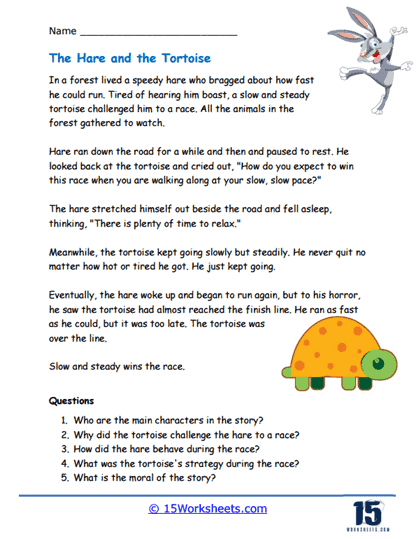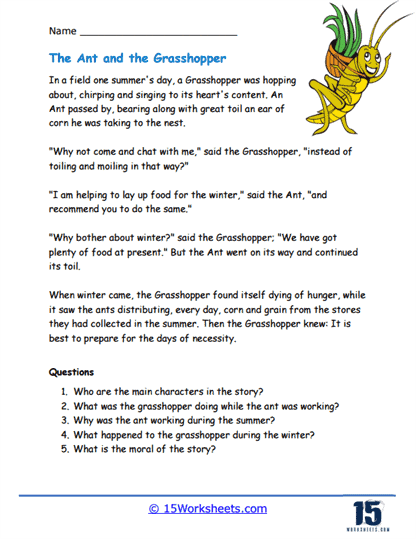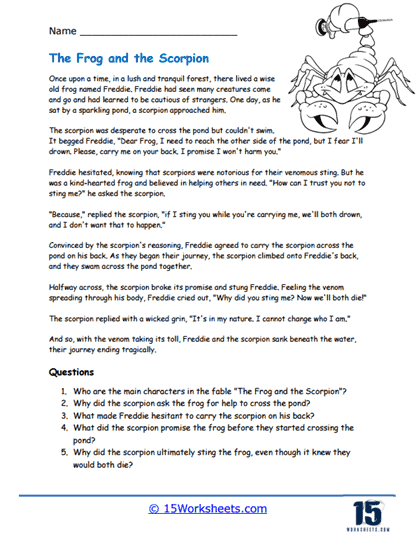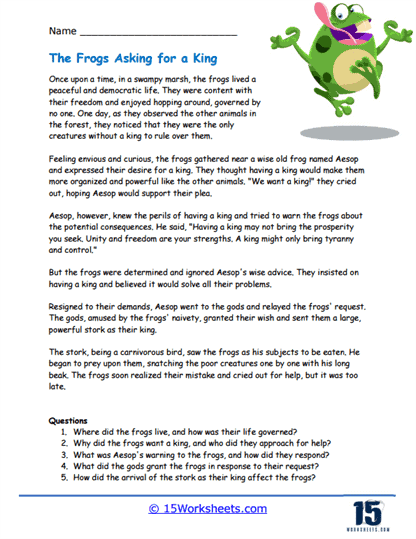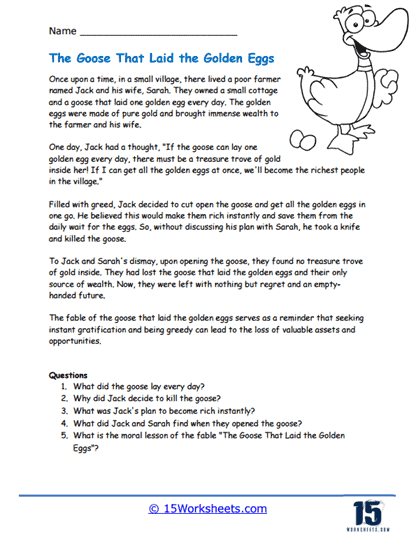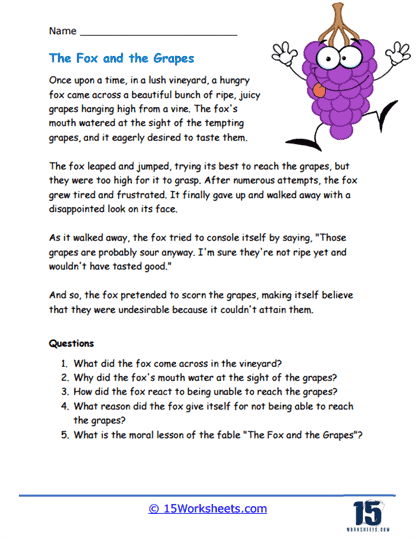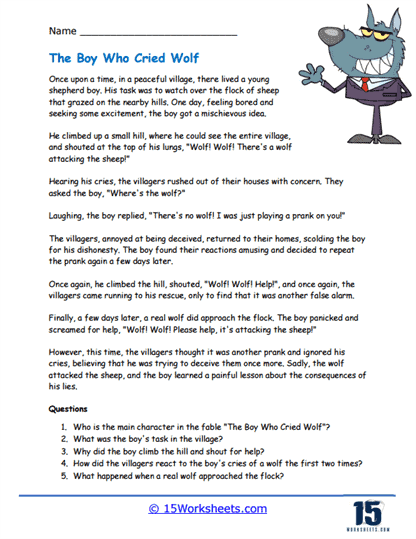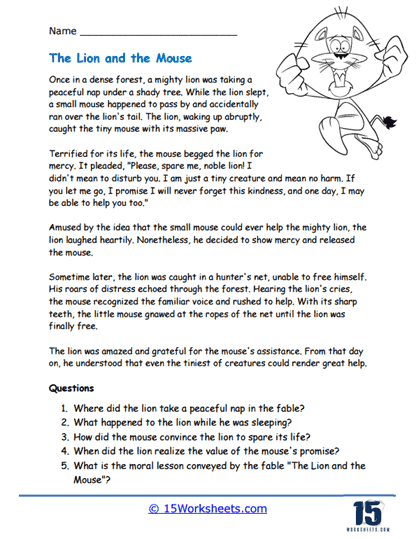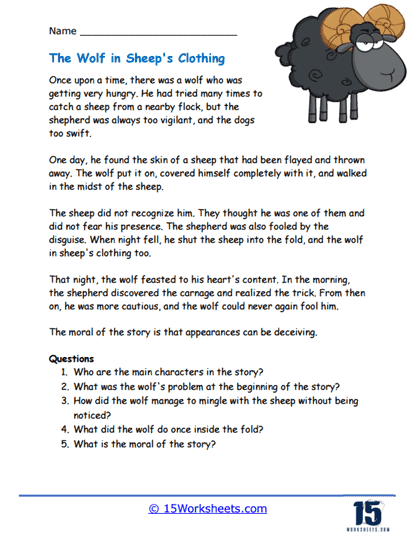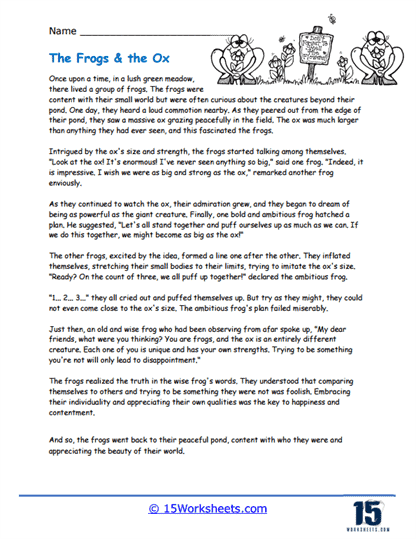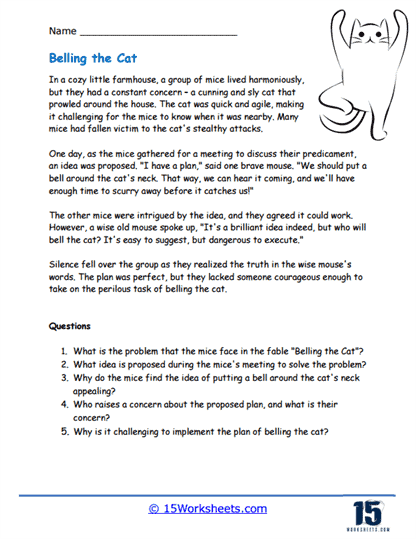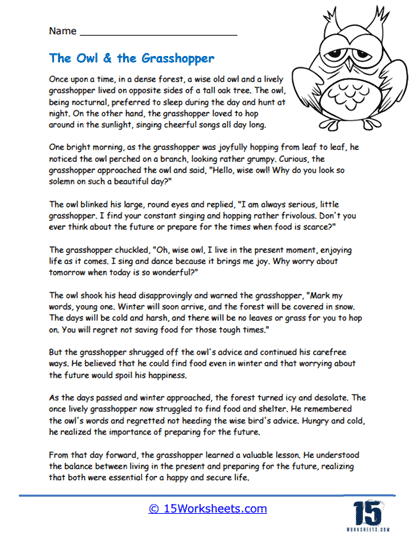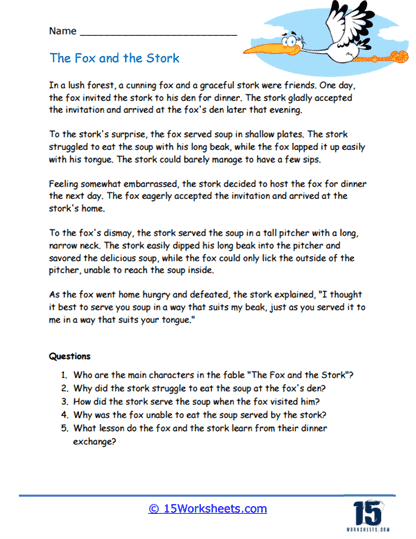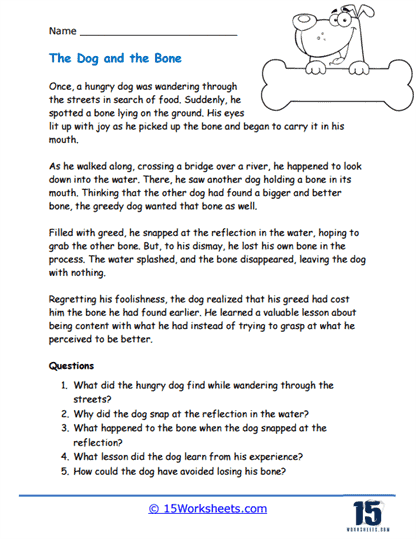Fable Comprehension Worksheets
All About These 15 Worksheets
The exercises that you will find on these worksheets will aim to make learning enjoyable and interactive while encouraging students to think critically, develop their comprehension skills, and internalize the important life lessons conveyed by fables.
These worksheets typically include a variety of exercises and activities to assess different aspects of a student’s comprehension. Here are some common types of exercises you might expect to see on these worksheets:
Reading Comprehension Questions – These questions assess the student’s understanding of the fable’s main events, characters, and plot. Students may need to answer questions about the who, what, when, where, and why aspects of the story.
Moral/Lesson Identification – Students are asked to identify the central moral or lesson conveyed in the fable. This helps them connect the story to its intended purpose of teaching values and life lessons.
Character Analysis – Students may be asked to analyze the main characters in the fable, their traits, motivations, and actions. This exercise helps students understand the characters’ roles in conveying the moral of the story.
Critical Thinking Questions – These questions challenge students to think deeper about the fable, its meaning, and its relevance to real-life situations.
What Are Fables?
Fables are short stories, often with animal characters that are given human qualities, which end with a moral or a lesson. The term “fable” comes from the Latin “fabula” which means “a story”, and it’s a type of storytelling that has been used for centuries, across many different cultures, to convey important moral or ethical lessons to its listeners or readers.
The unique thing about fables is that they wrap these lessons in a narrative that is engaging and entertaining, often involving clever animals or natural elements. Some of the most well-known fables come from Aesop, a storyteller from Ancient Greece, but every culture has its own traditions of fable.
How Do Fables Help Children
1. Moral Development – At the core of every fable is a moral or a lesson. This moral is often stated explicitly at the end of the story, and sometimes it’s implicit in the actions and consequences experienced by the characters. This helps children learn about what is considered right and wrong in their culture or society. It instills values such as honesty, kindness, perseverance, and respect for others.
2. Cognitive Skills – Fables often involve situations where the characters need to make decisions or solve problems, and their choices lead to various outcomes. This helps children understand cause and effect, enhances their problem-solving skills, and encourages critical thinking. It also introduces them to the concept of consequences and the idea that actions have results.
3. Emotional Understanding – Fables also help children understand and manage their emotions. They expose children to different scenarios, helping them empathize with the characters and understand their feelings. They also learn that actions driven by negative emotions like greed or anger often lead to negative outcomes.
4. Cultural Awareness – Since fables come from different cultures, they also provide an insight into those cultures’ norms, values, and belief systems. This increases children’s understanding and appreciation of diverse cultures and ways of life.
5. Language and Communication Skills – Listening to or reading fables can help children improve their language skills. They are introduced to new words, phrases, and ways of expressing ideas. This, in turn, aids in their overall communication skills.
6. Imagination and Creativity – Fables are typically quite imaginative, with animals talking and interacting like humans, and other magical elements. This can help to spark children’s own creativity and encourage imaginative play.

